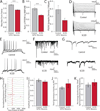Modelling schizophrenia using human induced pluripotent stem cells
- PMID: 21490598
- PMCID: PMC3392969
- DOI: 10.1038/nature09915
Modelling schizophrenia using human induced pluripotent stem cells
Erratum in
- Nature. 2011 Nov 24;479(7374):556
Abstract
Schizophrenia (SCZD) is a debilitating neurological disorder with a world-wide prevalence of 1%; there is a strong genetic component, with an estimated heritability of 80-85%. Although post-mortem studies have revealed reduced brain volume, cell size, spine density and abnormal neural distribution in the prefrontal cortex and hippocampus of SCZD brain tissue and neuropharmacological studies have implicated dopaminergic, glutamatergic and GABAergic activity in SCZD, the cell types affected in SCZD and the molecular mechanisms underlying the disease state remain unclear. To elucidate the cellular and molecular defects of SCZD, we directly reprogrammed fibroblasts from SCZD patients into human induced pluripotent stem cells (hiPSCs) and subsequently differentiated these disorder-specific hiPSCs into neurons (Supplementary Fig. 1). SCZD hiPSC neurons showed diminished neuronal connectivity in conjunction with decreased neurite number, PSD95-protein levels and glutamate receptor expression. Gene expression profiles of SCZD hiPSC neurons identified altered expression of many components of the cyclic AMP and WNT signalling pathways. Key cellular and molecular elements of the SCZD phenotype were ameliorated following treatment of SCZD hiPSC neurons with the antipsychotic loxapine. To date, hiPSC neuronal pathology has only been demonstrated in diseases characterized by both the loss of function of a single gene product and rapid disease progression in early childhood. We now report hiPSC neuronal phenotypes and gene expression changes associated with SCZD, a complex genetic psychiatric disorder.
Figures




Comment in
-
Stem Cells: Zooming in on schizophrenia.Nat Rev Neurosci. 2011 Jun;12(6):308-9. doi: 10.1038/nrn3040. Epub 2011 Apr 29. Nat Rev Neurosci. 2011. PMID: 21527951 No abstract available.
-
Human induced pluripotent stem cells: a new model for schizophrenia?Cell Stem Cell. 2011 May 6;8(5):461-2. doi: 10.1016/j.stem.2011.04.016. Cell Stem Cell. 2011. PMID: 21549318 No abstract available.
References
Publication types
MeSH terms
Substances
Associated data
- Actions
Grants and funding
LinkOut - more resources
Full Text Sources
Other Literature Sources
Medical
Molecular Biology Databases
Research Materials

